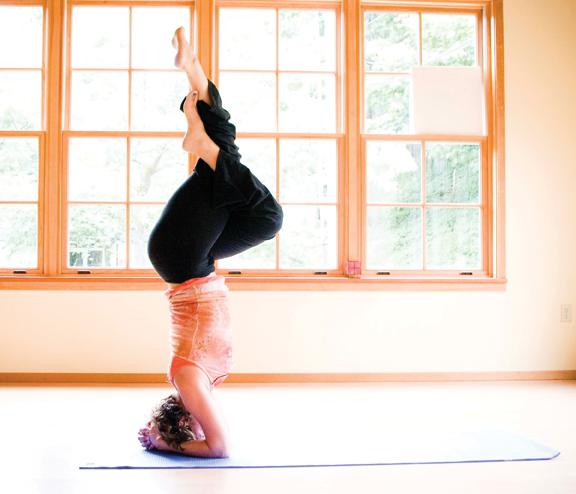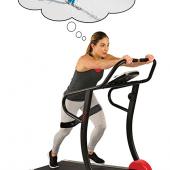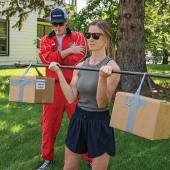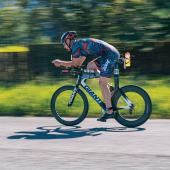Time In
Nobody really wants to spend a beautiful July afternoon staring at their own sweaty reflection in a fingerprint-smudged weight-room mirror. Yeah, we get that. But if you’re willing to make the sacrifice, your time inside will pay off big when you get back outside.
No matter what your sport of choice—running, hiking, or fly-fishing—you tend to work the same muscles over and over again. When you neglect big chunks of your body, it can lead to imbalance and injury, not to mention a dichotomous physique. (Think about the guys who work on nothing but their biceps and leave their big, flabby guts to flap in the passing breeze. Don’t let that be you.)
The Three Keys
The odds are good that no matter how you choose to recreate, your sport requires explosive power, muscular endurance, or flexibility—or some combination of the three. Unless you’re a blocker on the roller-derby team, pure muscle bulk doesn’t matter at all.
Plyo for Power
Plyometrics, also known as “jump training,” is a terrific way to improve your muscle-response time. If a concentric (shortening) muscular contraction follows an eccentric (lengthening) contraction of the same muscle, it’s a more powerful movement. Think about compressing a spring and letting it fly.
Plyo can be particularly beneficial for those of us who run trails, downhill ski, or play racquet sports. The good news is that it doesn’t take a lot of time to get a great benefit. Twenty to 30 minutes twice a week will do.
Some good moves to include:
Jump Squats
Double Leg Tuck Jumps
Floor Hits
Power Lunges
Heisman
To minimize the risk of injury, land softly. On your toes. Think cat.
Circuits for Endurance
No matter what your sport, we can all stand to improve our longevity. This isn’t about grunting and throwing around the heaviest weights you can lift. To improve muscular endurance, choose a lighter weight and shoot to complete 50 reps. Aim for two to three 20-minute sessions a week.
Some good moves to include:
Shoulder Presses
Bicep Curls
Tricep Kickbacks
Squats
Lunges
Calf Raises
Yoga
You aren’t too manly for it. Flexibility is one of the basic components of physical fitness, and it’s one too many people flat-out ignore. The right assortment of yoga poses works the entire body, including those oft-ignored stabilizers. When your muscles are flexible, they’ve got greater strength potential, and, even better, they’re far less prone to injury. You don’t want to spend your summer on the couch nursing a tear, do you?
Running, paddling, and hiking shorten and tighten your muscles. Adding in some opposing movements restores, elongates, and loosens them back up, so you’re positioned to perform better the next time you hit the trail or river. You’ll notice you feel less sore, too. Aim for two 20-minute sessions a week.
Some good moves to include:
Half Moon
Chair
Downward Dog
Bound Ankle
Pigeon
Do we have you convinced yet? Get into the gym for an hour or two every week this summer, and we promise you’ll do your thing, whatever it happens to be, better. And you won’t have to wait in line for a shower.
Freelance writer, sporting event manager, and maniacal bootcamp instructor Tara Alfonsi holds dual citizenship in Duluth, Minnesota and Bozeman, Montana.











